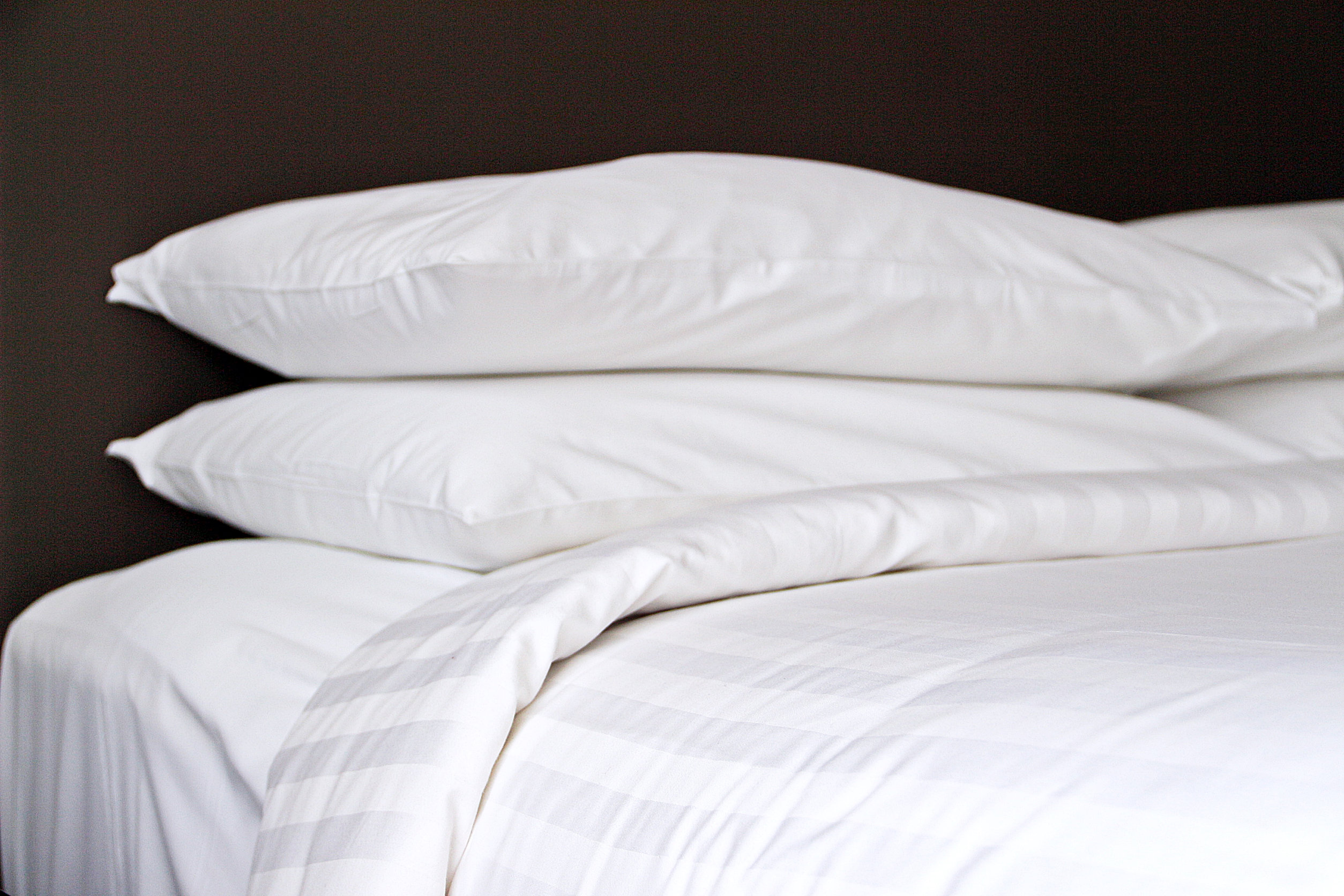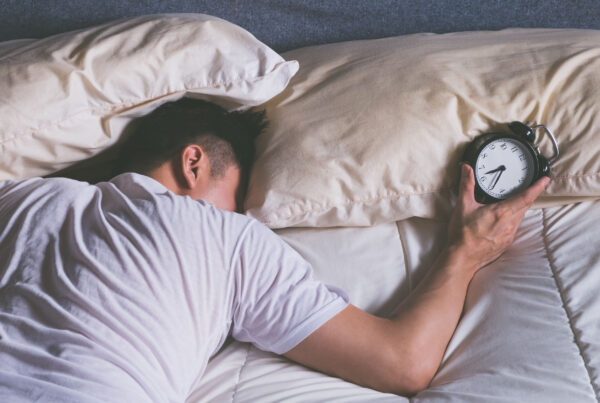”Ohio, how old is your mattress? Did you know a mattress can contribute to the quality of your sleep? A mattress can be an investment in your sleep, and therefore your health. We hope you find this week's article helpful and informative!
Reading Time: 15 Minutes
MWi Hack:
- Discover everything you need to know about picking a mattress
MWi Summary:
- The position you sleep in can help inform your decision on a mattress.
- There are 5 types of mattress materials: foam, innerspring, hybrid, latex, or airbed.
- While it is a subjective measurement, firmness is an important factor when buying a new mattress.
- Remember, even if it is more expensive, a good quality mattress is a serious investment in your life as well as your children’s lives.
How to Choose a Mattress
Experts agree that getting good sleep is one of the single best ways to maintain and improve our health. A mattress is a huge factor in our ability to sleep well, yet many people overlook its importance and keep using a mattress that fails to provide enough support and comfort.
A new mattress can be a sizable investment, but taking this step can unlock your ability to sleep better. As with any major purchase, you want to make sure that you choose wisely.
To help you get a handle on how to choose a mattress, we break down the key information piece-by-piece. With this guide, you’ll have the knowledge to find a top-performing mattress with the right firmness and features to suit your needs and deliver great sleep night after night.
Find Your Mattress
Answer 3 Easy Questions To Discover Your Perfect Mattress
What position do you sleep in?
-
Side
You normally wake up sleeping on your side
-
Back
You normally wake up sleeping on your back
-
Stomach
You sleep lying flat on your stomach
Mattress Types
If you’re just getting started looking for a new mattress, you’ve probably noticed that the number of options can be dizzying. A helpful way to get your bearings is to start by thinking about mattress types.
Almost all mattresses can be identified as one of five types — foam, innerspring, hybrid, latex, or airbed. Innersprings are the most well-known and traditionally were the mainstay in homes nationwide. In recent years, though, other mattress types have surged in popularity.
These other mattress types have expanded their reach primarily by offering a more dynamic performance. They’ve also become more affordable and accessible with the growth of the online mattress industry.
Knowing the basics about each of these types can serve as a foundation upon which you can continue your search for the best mattress.
- Foam: These mattresses are made entirely with foam and no coils. They tend to provide above-average contouring to the body, pressure relief, and motion isolation, making them a good fit for side sleepers and couples. Among foams that are used in these mattresses, memory foam is the most well-known.
- Innerspring: An innerspring mattress has a coil-based support system and few other layers. While the coils offer some support, the innerspring often lack pressure relief. Their sleeping surface is bouncier and has limited motion isolation. With a lower price point, these are more popular among budget shoppers.
- Hybrid: Hybrids have two central elements: an innerspring support core and a substantial foam comfort system. The comfort layers can include foam or latex and sometimes will even include a shorter layer of coils (called micro-coils). These mattresses provide a blend of bounce and contouring with low heat retention and can be a good fit for sleepers in any position depending on exactly how they are built.
- Latex: When all of the layers of a mattress are made with latex rubber, some call it an all-latex or true-latex mattress. For simplicity’s sake, we just use the term latex mattress. These offer top-notch bounce and durability with moderate contouring. When made with natural and organic latex, they are a top pick among eco-conscious shoppers.
- Airbed: Airbeds are built with an air chamber as their support core. A pump — controlled by a smartphone or remote — is built into the mattress to add or remove air with the push of a button, giving sleepers the utmost in firmness flexibility. Couples love airbeds because each side can be set to a different firmness level.
Firmness
Comfort is subjective, which means that it’s critical to find a mattress that feels right to you.
Firmness describes how hard or soft a bed feels. To compare options, we use a 1-10 firmness scale. It isn’t perfectly scientific, but it does help convey how a mattress feels and who it may be best suited for.
| Firmness Scale | Firmness Level | Best For |
| 2 | Extra Soft | Side sleepers under 130 pounds |
| 3 | Soft | Side sleepers under 130 pounds |
| 4 | Medium Soft | Sleepers under 130 pounds; side sleepers under 230 pounds |
| 5 | Medium | Back and side sleepers between 130 and 230 pounds |
| 6 | Medium Firm | Sleepers between 130 and 230 pounds; side sleepers over 230 pounds |
| 7 | Firm | Side sleepers over 230 pounds; back and stomach sleepers over 130 pounds |
| 8-9 | Extra Firm | Back and stomach sleepers over 230 pounds |
While the chart lists who most frequently benefit from a particular firmness level, remember that comfort is subjective. Some people just prefer a softer or a firmer mattress or may have other factors — such as back or hip pain — that influences what mattress feels right.
If you’re not sure what firmness level is right for you, there are a few ways to help identify what might be the best fit:
- Consider your weight and sleeping position to narrow down a range.
- Reflect on whether you’ve found yourself wishing for a harder or soft mattress when using your current mattress at home or if you’ve recently stayed at a hotel. For reference, most hotel mattresses are Medium to Medium Firm, which have the widest overall appeal.
- Visit a local mattress store as a research mission and try out some beds. Make sure to stay on a mattress for at least 10-15 minutes to really evaluate what’s comfortable.
How to Choose a Mattress for Back Pain
There are myriad potential causes of back pain, but an unsupportive mattress is one factor that should not be underestimated. In people without back problems, proper support may prevent pain from arising, and in people who already have back issues, the right mattress may help with cushioning and comfort.
Choosing the best mattress for back pain means considering the nature of that pain alongside other mattress needs and preferences. Some back pain is short-term and comes on suddenly. This is known as acute back pain. Other times, the pain persists over a long period of time and is known as chronic back pain. Back problems can start out as acute, such as from an injury, and become chronic.
A person with acute back pain may need only temporary relief from their mattress. This may mean using extra pillows or adjusting their sleeping position. For chronic back pain, more significant steps may be needed, such as choosing a mattress that is firmer or softer. Finding the right levels of comfort as well as pressure relief can help keep the spine properly oriented during sleep.
The optimal mattress may also depend on where a person experiences back pain.
Lower Back Pain
Lower back pain affects the bottom five vertebrae (L1-L5) in the lumbar area. It is the most common type of back pain and one of the leading reasons why Americans visit their doctor. This back region is vulnerable to bending and twisting that can harm the muscles and the spine itself.
Spending too many hours in a bad sleeping position can cause lower backaches. For side sleepers, this can arise if the shoulders and hips aren’t supported, throwing the whole spine off-kilter. For back and stomach sleepers, it may occur because of a mattress that is too soft or too firm, putting pressure on the natural curvature of the lumbar spine.
In general, side sleepers should look for Medium Soft to Medium Firm mattresses that can cushion their impact points. Back and stomach sleepers should look for Medium Firm to Firm beds that have only light conforming.
Middle and Upper Back Pain
Middle and upper back pain are far less common. The anatomy in these regions is more stable, reducing the likelihood of sprains and strains from twisting movements. Pain in these areas can be tied to more serious problems and should be checked out by a doctor.
In some cases, poor posture can create undue tension in the middle or upper back. A pressure-relieving mattress that contributes to spinal alignment can reduce the risk of this kind of pain. Having a quality pillow with the right amount of loft can also ensure that the neck and upper spine have adequate support.
Sleeping Positions
What position are you in when you normally tuck in to fall asleep? And in what position do you find yourself when you wake up?
The answers to these questions can provide key insight to help choose a mattress. The parts of your body that need more support in order to maintain spinal alignment vary based on your sleeping posture. For that reason, choosing a mattress to suit your sleeping position can boost comfort and help avoid aches and pains.
Back Sleepers
Back sleepers put the greatest pressure on their lower back. If a mattress is too soft, the torso can sink in more deeply than the upper back and lower body, and this U-shape can create strain. If a mattress is too firm, there won’t be any accommodation of the slight curve in the lower back. As a result, back sleepers do best with a Medium Firm to Firm mattress with light to moderate contouring.
Side Sleepers
Side sleepers have sharp pressure points where the body is the widest, most notably at the shoulders and hips. On a too-soft mattress, those points will dip out of line with the rest of the spine. On a too-firm mattress, they will feel the impact at those points and be prone to misalignment. Consequently, side sleepers do best with Medium Soft to Medium Firm mattresses.
Stomach Sleepers
Stomach sleepers are like back sleepers and put the most pressure on the lumbar spine. They usually do best with a Firm mattress that can keep them out of a U-shape and that won’t feel suffocating when lying face-down on the mattress.
Combination Sleepers
Combination sleepers find themselves in more than one position through the night. They typically should choose a mattress based on the position they spend the most time in. If there’s no primary position, Medium Firm offers the best bet across the sleeping positions. These sleepers should also look for a responsive mattress that facilitates easy movement on the bed.
Body Types
Like sleeping position, body shape and weight influence the choice of the best mattress to provide spinal support, comfort, and other important features.
With a lighter profile, people who weigh under 130 pounds don’t sink as far into a mattress. To get sufficient contouring, they often benefit from a softer mattress, especially if they sleep on their side and/or have pronounced pressure points. Innerspring mattresses tend to be a poor fit, and foam or hybrid beds are compelling options.
People between 130 and 230 pounds can generally follow our suggestions for mattress firmness based on sleeping position in the previous section. Foam, hybrid, and latex mattresses are all solid options and can be selected based on their specific features and designs.
People over 230 pounds will sink further into a mattress, especially near heavier parts of the body, which can risk throwing off spinal alignment. These sleepers usually have better results with mattresses that are a bit firmer to help avoid that risk.
A responsive mattress is easier to move on top of, and this can be valuable to people over 230 pounds because it reduces the chances of feeling stuck in the bed. Latex and hybrid options tend to be the most responsive.
Durability is important to sleepers of any weight, but people over 230 pounds can cause more wear in the top layers of a mattress. For this reason, sleepers with a higher body weight often opt for a mattress with a thicker comfort system that uses high-density materials.
It’s not just weight that affects how to choose the right mattress. People with broader shoulders or hips may need a softer mattress with more contouring, especially if they are side sleepers. People over six feet tall should look closely at mattress dimensions to ensure that they can stretch out comfortably.
Pricing
As the piece of furniture that’s virtually guaranteed to get the most use, a mattress is a serious investment in your comfort. At the same time, it can be a serious investment financially, and pricing is a central factor to consider when buying a mattress.
A useful exercise for most shoppers is to think about their overall bedroom budget. This includes a new mattress and any other accessories that may be needed, such as new pillows or bedding.
The price range for mattresses stretches from extremely low-cost, low-quality models all the way up to six-figure designer beds. Looking past these outliers, most mattresses cost between $600 and $2,000.
| Mattress Type | Average Price Range (Queen) | Pricing of Popular Models |
| Foam | $900-1,300 | Casper Original ($995) Tuft & Needle Original ($595) Tempur-Pedic ProAdapt ($2,999) |
| Innerspring | $600-1,100 | Saatva ($1,199) Zinus Quilted Spring Top ($260) |
| Hybrid | $1,500-2,000 | WinkBed ($1,599) Dreamcloud ($1,299) Brooklyn Bedding Aurora ($1,699) |
| Latex | $1,600-2,000 | Avocado ($1,399) PlushBeds Botanical Bliss ($2,999) Zenhaven ($1,899) |
| Airbed | $2,000-2,400 | Sleep Number c2 ($999) Sleep Number p6 ($2,899) Saatva Solaire ($2,695) |
Mattresses with more features and robust design frequently carry a higher price tag, but this doesn’t mean that a costlier mattress is always better, which is welcome news to people shopping on a budget. A handful of factors can play into mattress pricing:
- Materials: Some types of materials, such as latex, frequently just cost more. In addition, the use of high-end, hand-crafted, organic, or otherwise specialty materials can push up the price of a mattress.
- Type of Construction: The way a mattress is built can affect its price. In general, taller mattresses that have more layers come with a higher cost.
- Brand: Like most consumer products, some brands, especially those that aspire to be luxury brands, charge more.
- Where it’s Made: If the mattress and its components are made in the USA, it likely will be more expensive than a mattress made overseas.
- Where it’s Sold: Buying online normally means a lower price, but there are opportunities to get a good deal in mattress stores, too, especially for savvy negotiators.
For people who are worried about the cost of a new mattress, there are a few points to keep in mind. First, there are great values to be found throughout the mattress price range.
Second, the prices we’ve listed above are MSRP, or in other words, the sticker price. It’s rare for customers to pay that price because regular sales, promotions, and discounts are abundant. For example, many brands run sales on holidays such as Labor Day, Memorial Day, Cyber Monday, and Black Friday. If you shop online, deals are typically offered right off the bat.
Third, though it can be a big expenditure, getting a great mattress is worth it. An optimal mattress will not only pay off in terms of your health, but with better durability, you won’t have to spend on a mattress again for years.
How to Choose a Mattress for a Child
Good sleep is vital for children. Kids need more hours of sleep than adults, and sleeping well is important during all stages of childhood development. Outfitting their bed with a quality mattress is a central part of making sure that children get the sleep that they need.
Knowing how to choose a mattress for a child has quite a bit of overlap with choosing a mattress for an adult, but there are meaningful differences to take into account.
One key difference is that safety is a greater concern when shopping for beds for children, especially infants who sleep in cribs. Assuring that the mattress meets safety guidelines is of the utmost importance.
Another difference is the size of the bed. Unlike adults, children can outgrow a bed, so it is necessary to think about the most appropriate size mattress based on a child’s age and their expected growth.
Depending on how old a child is, they may be able to use a smaller size (Twin or Twin XL) of a bed designed for adults. In other cases, parents may prefer a mattress built specifically for children. Choosing from the pool of beds available to adults means a wider selection of mattress types, models, and brands.
The cost of a mattress for kids can be another point of divergence. Many beds for kids are smaller and thinner, and the reduced amount of materials can make them less expensive. However, there are some beds for children that are designed with lots of extra features and can carry a price tag similar to that of an adult mattress.
How to Choose a Crib Mattress
There are several essential elements of choosing a crib mattress. Any crib mattress purchase should start first and foremost with safety. Key aspects of crib mattress safety include:
- Assuring that the crib mattress meets standards from the Consumer Product Safety Commission (CPSC) that relate to limiting exposure to lead and other compounds.
- Checking that the crib mattress meets CPSC size guidelines for use in a full-size crib. That means a minimum of 27.25 inches by 51.25 inches. The thickness should not be greater than six inches.
- Choosing a firm crib mattress as can reduce the risk of Sudden Infant Death Syndrome (SIDS).
- Keeping the mattress clear of soft objects, including toys, blankets, and pillows. Loose and soft items can pose a risk of suffocation and SIDS and should not be kept in an infant’s crib.
Beyond safety, there are other factors to review that relate to the convenience and usability of a crib mattress:
- Ease of Cleaning: Messes are almost inevitable on a crib mattress, so a design that makes it easy to keep clean is a big plus. For example, some crib mattresses are made with either a waterproof cover (generally made of vinyl) or a waterproof backing. Many parents find these features make cleanup much simpler.
- Weight: You likely will need to lift the crib mattress for cleaning, which for some parents provides a strong point in favor of lighter mattresses, such as those made of foam.
- Mattress Type: Foam and innerspring options are available and can both be used to create a firm sleeping surface. Some companies also make crib mattresses out of specialty materials or components, including some that are produced with an eco-conscious focus.
- Reversible Firmness: This design gives each side of the crib mattress a different feel. As your child gets older and doesn’t need quite as much firmness, the mattress can just be flipped over, helping you get more longevity out of your purchase.
How to Choose a Mattress Topper
If your budget can’t accommodate a new mattress, you can consider a mattress topper as an alternative. This approach won’t be as effective or long-lasting, but it can be a useful step if replacing your current mattress isn’t an option.
A topper sits on top of your current bed and goes underneath the fitted sheet. It can change the feel of your mattress and is most useful if your main focus is on adjusting the firmness level. Some toppers may be able to add contouring, motion isolation, or bounce in relation to your old bed as well.
Most toppers are one to four inches thick and made with only one material. Examples of materials used in toppers include memory foam, polyfoam, latex, down, cotton, polyester, and wool. Each of these materials brings certain benefits and downsides.
To choose a mattress topper, it’s useful to reflect on many of the same elements that play a part in choosing a new mattress:
- Your sleeping position
- Your body shape
- Your preferred firmness
- The type of material that best suits your needs
- Your budget
When reviewing those factors in the context of mattress toppers, make sure to think about your existing mattress because it will work along with the topper to affect the overall feel of your bed. For example, if you have a bouncy innerspring, be aware that it will still transfer motion even with a memory foam topper.
Ultimately, if you choose to buy a topper, it’s important to be realistic. A topper won’t last as long as a whole new mattress, and it can’t revive a bed that’s already worn out. Putting a topper on a bed that is worn out and sagging will just mean that the topper quickly starts sagging as well.
MWi would like to thank The Sleep Foundation for their expert insights that we were able to share with our community. To read the original article go to:
https://www.sleepfoundation.org/mattress-information/how-to-choose-a-mattress






